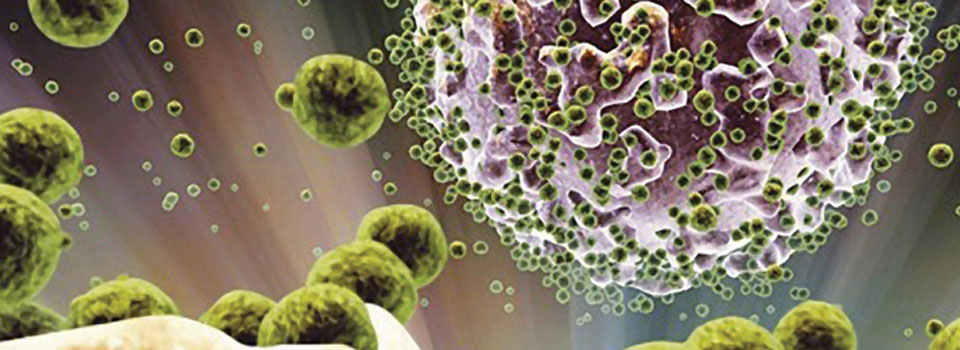Somewhere in the world, perhaps a place near you, a once-harmless virus, bacterium or fungus may be undergoing a genetic makeover in an animal’s gut, transforming into an infectious pathogen capable of causing illness, disability or even death. To stave off such possibilities and to corral infectious diseases already plaguing society, the University of Georgia is investing considerable time, money and energy to develop new countermeasures against infectious illnesses.
Already ensconced at UGA is the interdisciplinary Center for Tropical and Emerging Global Diseases, established in 1998 to foster research, education and service in its subject areas. More recently, UGA opened the Animal Health Research Center, which is a state-of-the art biocontainment facility for the study of infectious microbes. The university has redeployed a campus complex, Riverbend South, as an infectious-disease research facility, and it has recruited several world-renowned experts in associated fields.
The heart of UGA’s efforts is its Faculty of Infectious Diseases, an initiative of the Office of the Vice President for Research. Launched two years ago, the Faculty’s roster now includes some 90 professors from 20 departments. This multidisciplinary approach is aimed at encouraging scientific collaboration and stimulating the rapid application of findings to serve the patient’s needs, said Duncan Krause, director of the Faculty of Infectious Diseases. Collaboration is taking place not only among scientists within the University of Georgia but also between UGA and researchers at private companies and other institutions, including Georgia Tech, Emory University, and the U.S. Centers for Disease Control and Prevention (CDC) in Atlanta.
Influenza is but one item on a long list of global public enemies against which UGA scientists are mounting a full-court press. Some, like flu, are household names-malaria, AIDS, tuberculosis. Others are so strange-sounding that TV commentators often have trouble pronouncing them-schistosomiasis, leishmaniasis, lymphatic filariasis, trypanosomiasis (Chagas disease). Regardless of their names, these maladies directly affect hundreds of millions of people every year. Internationally, infectious diseases are the leading killer and crippler of children and adolescents.
Dan Colley, director of UGA’s Center for Tropical and Emerging Global Diseases
(CTEGD) and an expert on schistosomiasis, has researched this disease for decades. Caused by a parasitic flatworm spread by freshwater snails, schistosomiasis affects more than 200 million people in Africa, Asia and the Americas. The disease, which can be life-threatening, damages internal organs and impairs physical and cognitive development in children.
Largely because of immunologist Colley’s international stature in schistosomiasis, the Bill and Melinda Gates Foundation awarded $18.7 million to the UGA Research Foundation last winter to develop and evaluate research-based approaches and diagnostic tools to identify, control and, where feasible, even eliminate the disease. It was the largest medical research grant in the university‘s history and its third largest overall.
Infectious diseases are not just a looming threat to humans-they also pose an ever-present danger to animals, both wild and domesticated. Chances are good that what infects animals will cross over to humans, with the process being expedited by climate change, rapid travel and drug-resistant microbes. A study in the journal Nature last year by John Gittleman, dean of UGA’s Odum School of Ecology, and his colleagues showed that 61 percent of new human diseases start in animals, mostly wildlife. For example, avian flu comes from birds. SARS, which appeared in 2003, likely originated in bats. UGA’s College of Veterinary Medicine, having excelled in animal disease research for years, is now focusing on diseases that migrate from animals to humans. In its influenza studies, for instance, vet-school researchers are trying to discover the genetic factors that allow such spread, how the viruses change as they move through different species, and how they cause disease in each affected organism.
